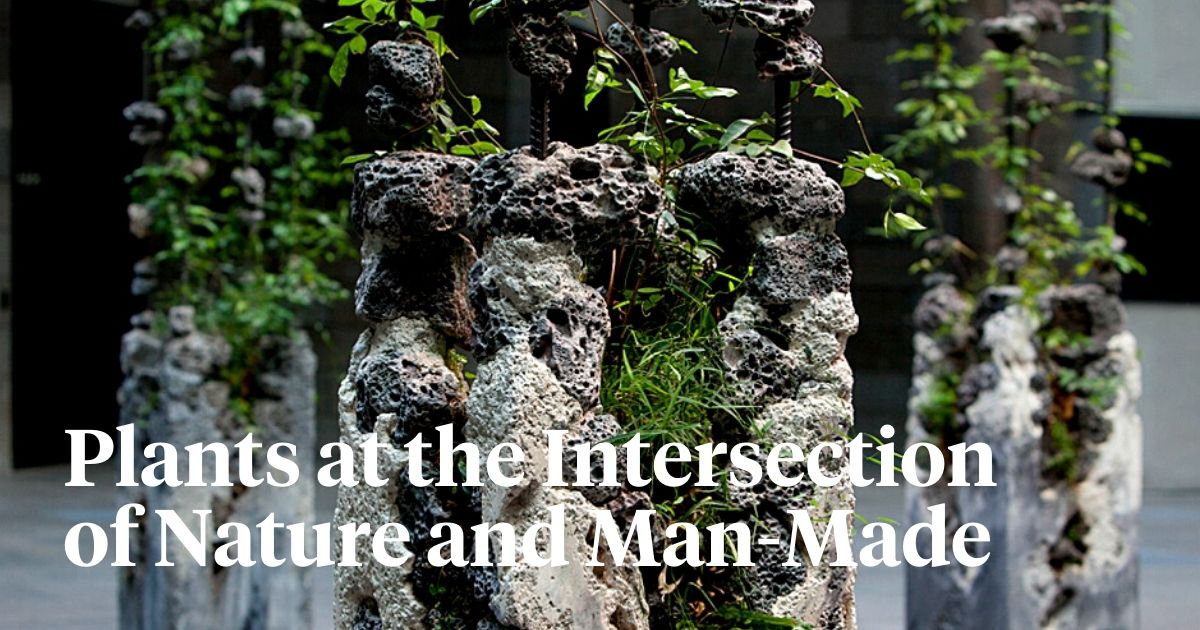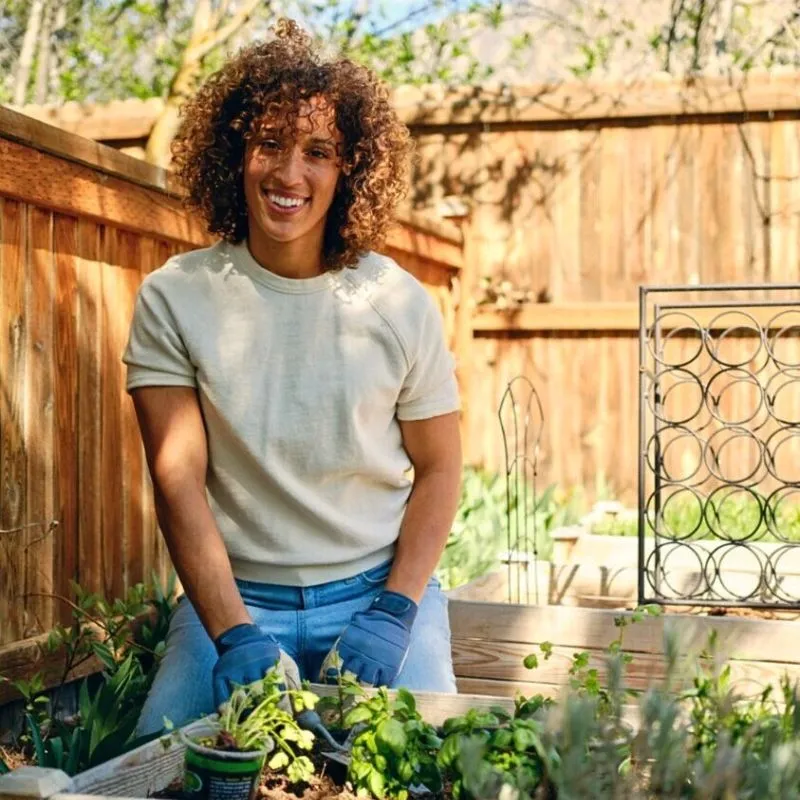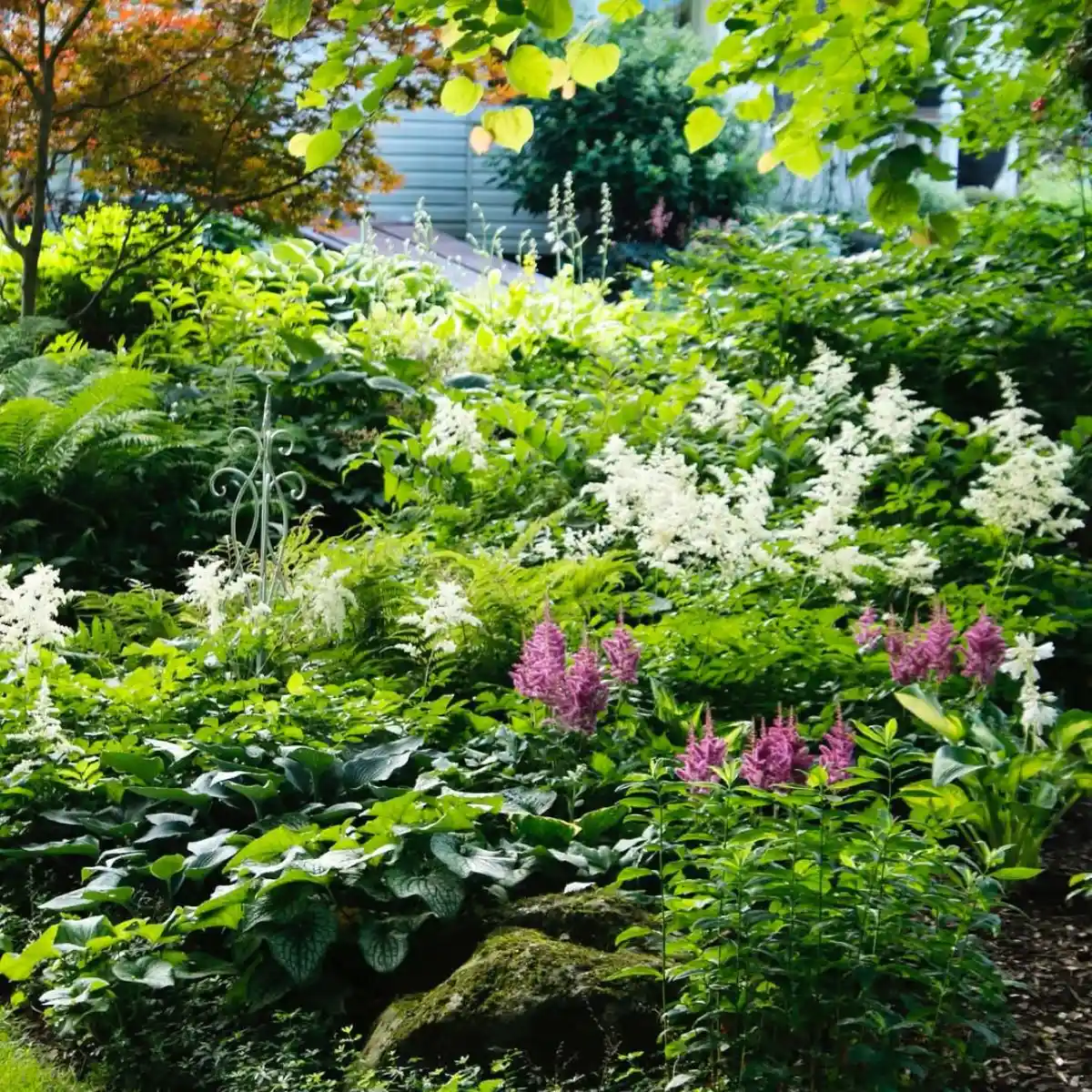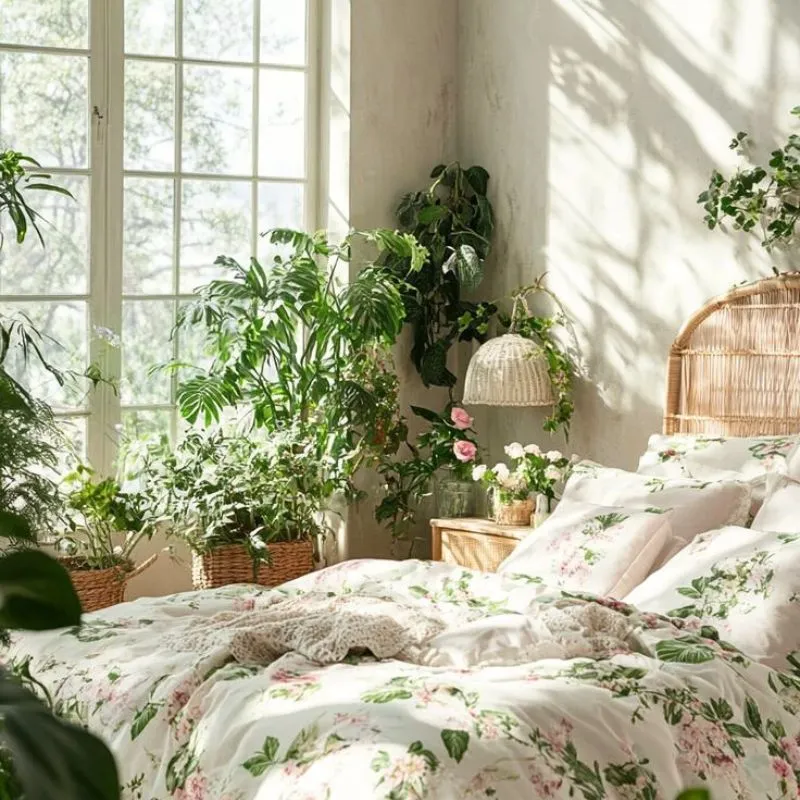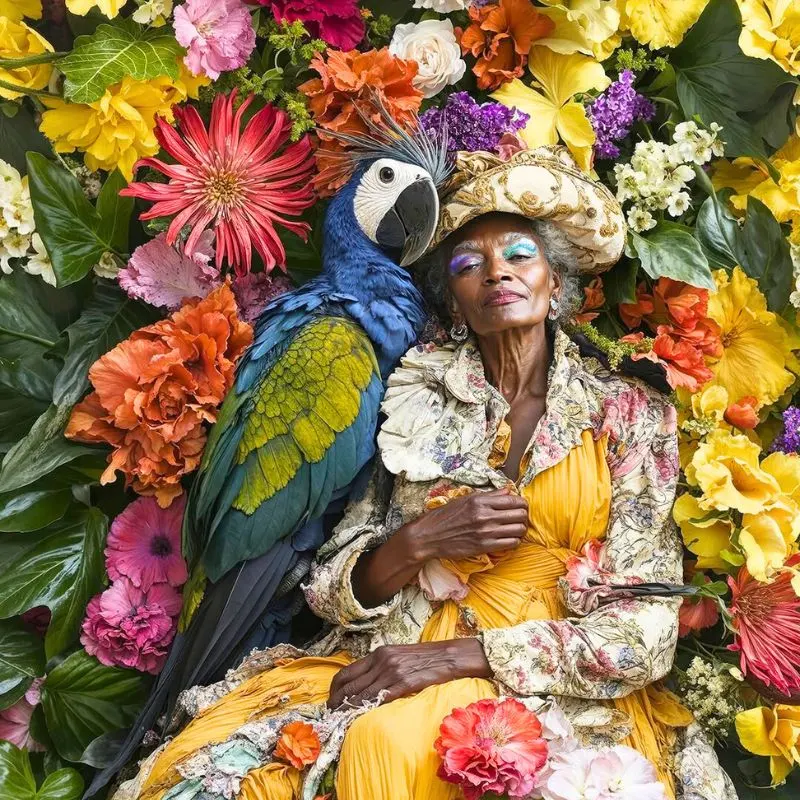Australian avant-garde artist, Jamie North, has carved a unique niche for himself in artistry that explores the intersection of what is natural and what is man-made. His fascinating artworks, mainly cast concrete sculptures, incorporate native Australian plant species to create living, evolving forms, with an emphasis on the symbiotic relationship between nature and industry.
North's creations bring to the fore an examination of themes of growth, decay, progress, and collapse. His unique artistic practice, which seamlessly blends nature and concrete, offers an introspective exploration of the powerful messages of the dichotomies of plants - and nature - and inspires audiences to rethink their relationship with the environment. It inspires a much deeper appreciation for the resilience of nature.
A Fusion of Nature and Concrete
In one of the series of his works, North’s artistry involves terraforming, which is the deliberate manipulation of an environment to make it capable of sustaining life. The artist has turned this term into a noun and applied it to his series of sculptures.
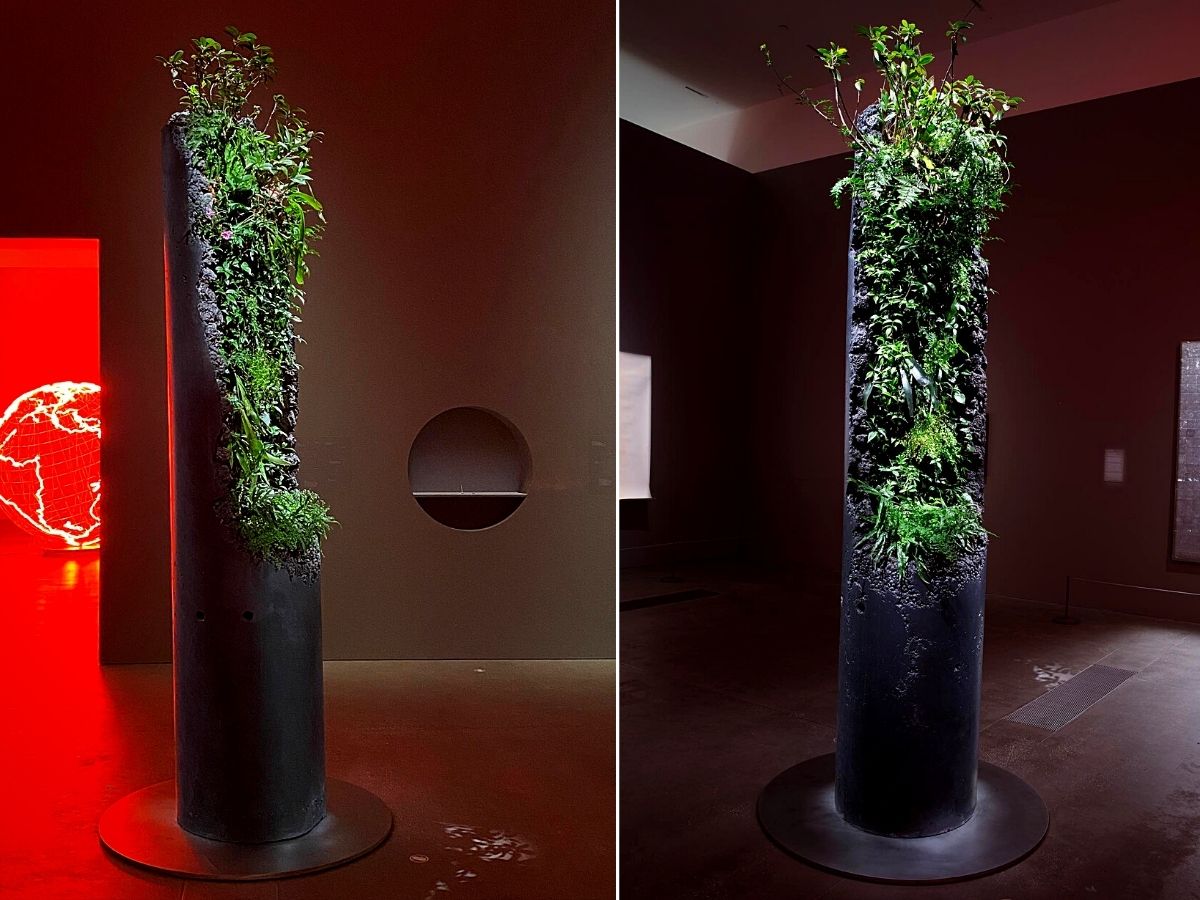
In this context, sets of marble and concrete pillars expressively filled with plants – 'terraforms' - are supposed to act as an imagined archeology of the relic of the galleries that his sculptural works are.
By and large, in his overall sculptural practice, concrete serves as the medium through which nature and the built environment converge. His sculptures act as vessels for native Australian plants to gradually intertwine with the inorganic concrete, distorting the boundaries between nature and human-made. Through a careful exploration of growth lines and the topography of his works, the selected plants become entangled with the concrete, resulting in a continually evolving and living sculptural form.
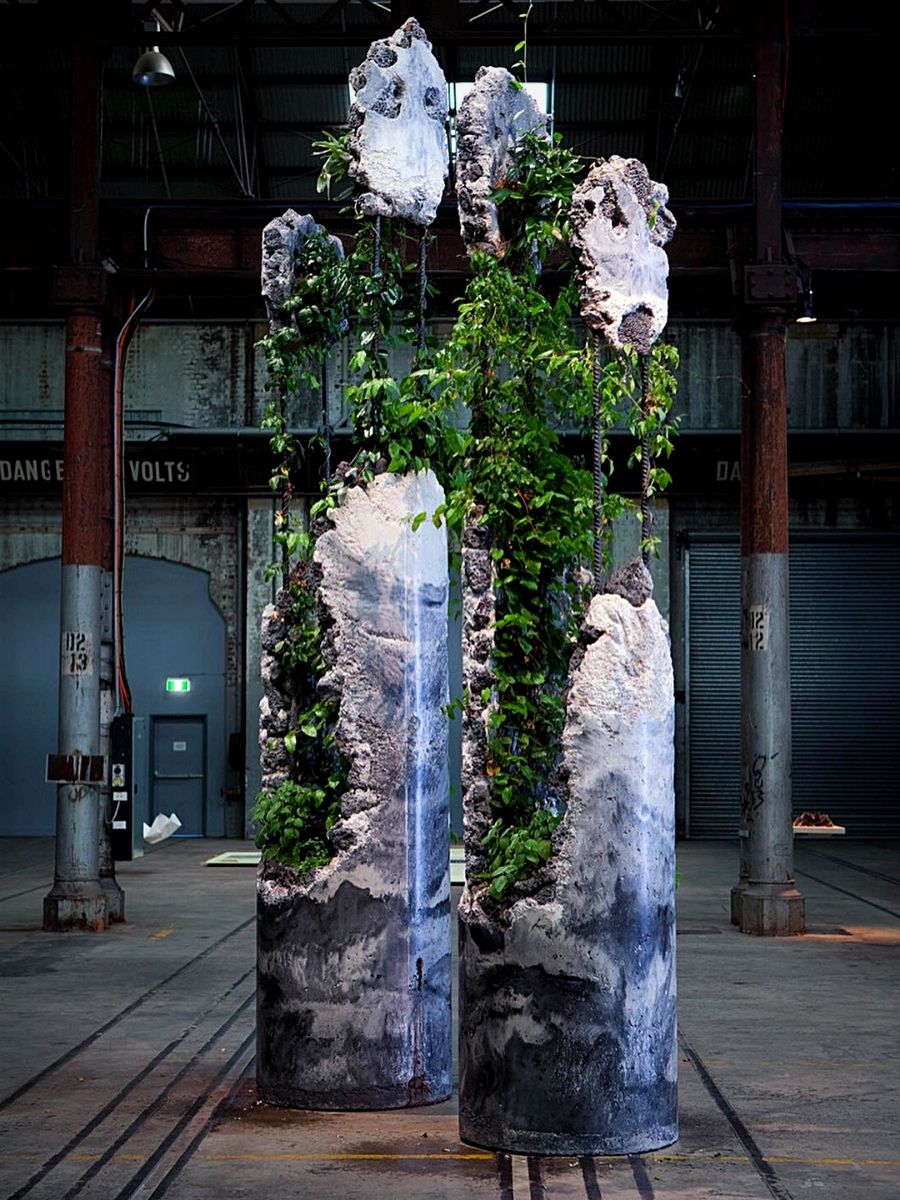
One of the most intriguing aspects of North's sculptures is the dichotomy they embody. While on the one hand, the lush inner crevices of the sculptures reveal the unpredictability and resilience of nature, on the other hand, the seemingly obstinate exterior shells of the sculptures represent the rigidity and permanence of the human-made world. This tension between opposing forces creates a fascinating visual and conceptual experience for viewers, invoking thoughts of industry and ruin, as well as melancholy and triumph.
North's use of industrial materials in his sculptures adds another layer of complexity to his work. The jagged edges and weathered appearance of his forms expose various aggregates like coal ash and steel slag. These materials, despite resembling volcanic rock, are actually by-products of human industrial activities. They, likewise, blur the disjunction between the naturally occurring and the anthropogenic.
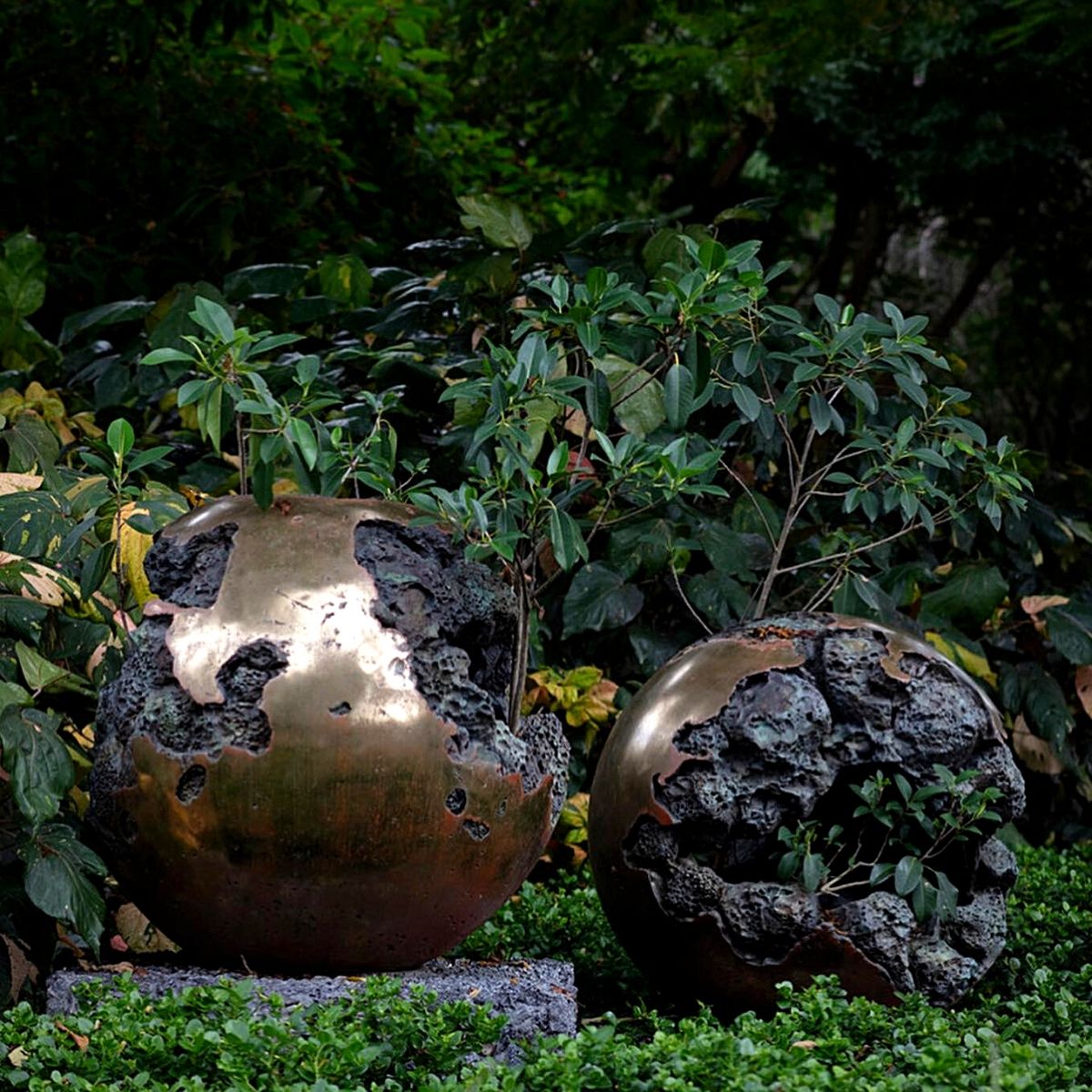
In essence, by repurposing these waste materials, the Australian artist brings attention to the regenerative potential of art and nature, showcasing the redeeming power of nature to transform industrial bits and pieces into something beautiful and meaningful.
However, a defining element of North's sculptures is the integration of plant life. Native Australian plant species take root within the crevices and cavities of his concrete forms, defying the odds and establishing themselves into a thriving ecosystem.
Over time, creeping vines and lithophytes (plants that grow on rocks) climb the towering structures, bringing back life into the cracked and weathered surfaces. This unexpected coexistence of flora and concrete challenges conventional notions of where and how plants can thrive, highlighting the resilience and adaptability of nature.
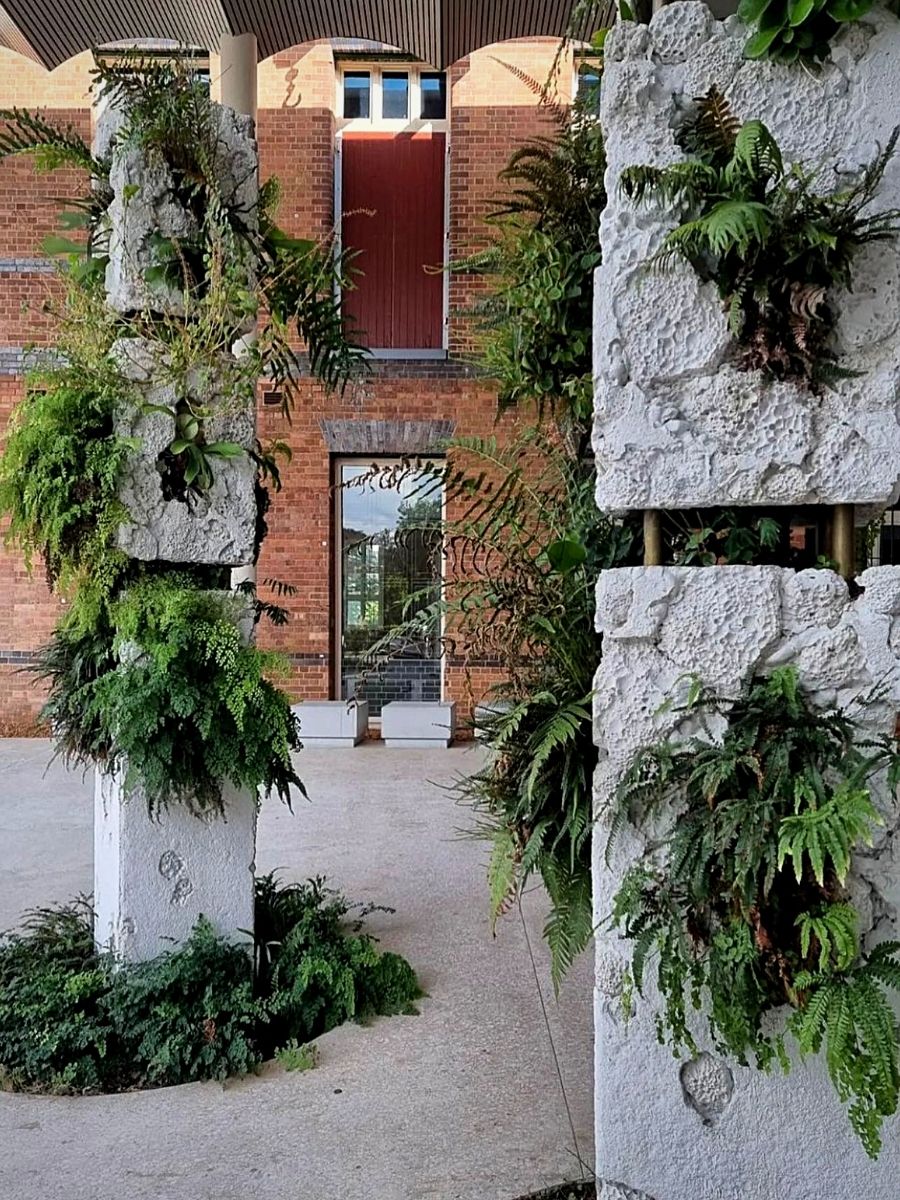
It is worth noting that the characteristic existence of plants in North’s works is the result of a childhood inclination towards the natural world. This is a relationship that he describes as being ‘communicative.’
Jamie North:
“From an early age I have observed plants in an intense way. And my childhood memories are filled with very specific thoughts around them.”
In bringing organic and inorganic materials together in an unimaginable way, the artist’s redemptive re-use of the waste generated by human activity presents an elemental regeneration process that defines the success and succession of nature.
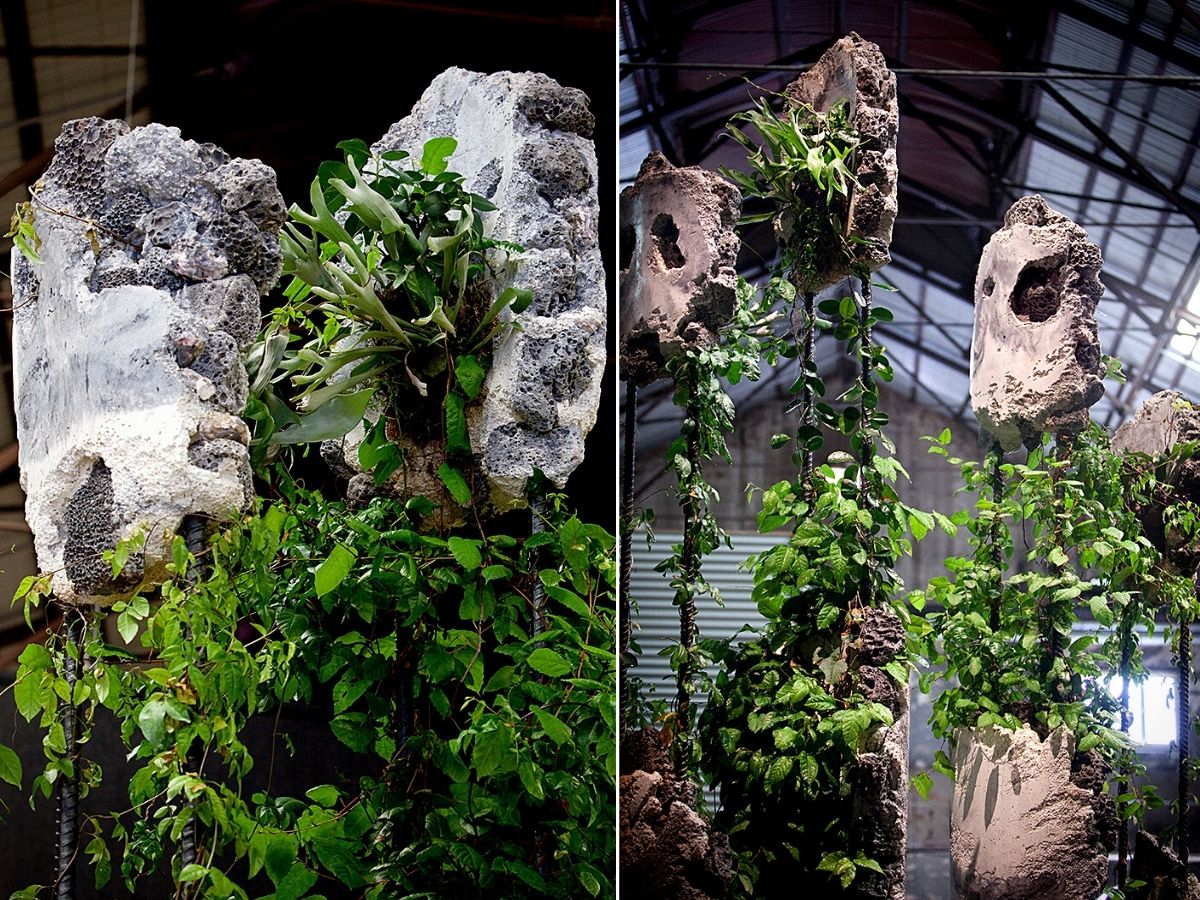
You can also read about these abandoned places reclaimed by nature captured in Romain Veillon's photographs and how Ranjani Shettar's intricate sculptures fuse art and nature.
The Choice of Plants That North Uses
While specific plant species used by the artist in his sculptures may vary depending on the project and installation site, there are several species that he has incorporated into most of his artworks. The use of native and locally adapted plants is, essentially, a common trend in his works, as he strives to create a pleasant relationship between the natural and the human-made.
It, therefore, is important to note that his selection of plant species is context-specific and may vary depending on the particular project and the ecological considerations of the site.
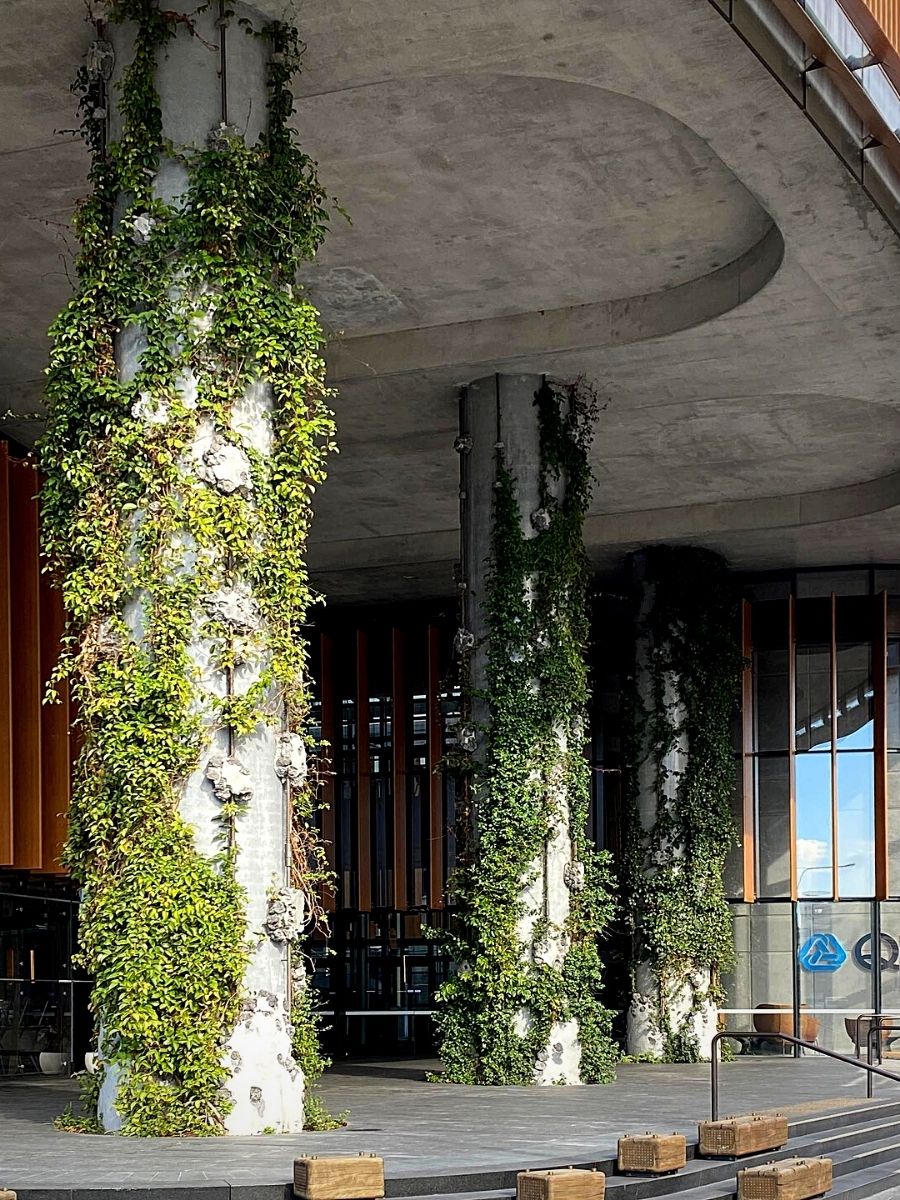
Some plants native to the region and which he uses include:
Disphyma crassifolium (Common Ice Plant)
This is a succulent plant, native to coastal regions of Australia, is known for its fleshy, cylindrical leaves and vibrant yellow flowers. North has utilized the cascading growth habit and hardiness of the Disphyma crassifolium to create visually striking compositions in his sculptures.
Carpobrotus glaucescens (Pigface)
Also a coastal succulent plant, Carpobrotus glaucescens has thick, triangular leaves and bright pink or purple flowers. Its ability to thrive in sandy and rocky environments makes it suitable for integration into North's concrete sculptures, adding contrasting colors and textures.
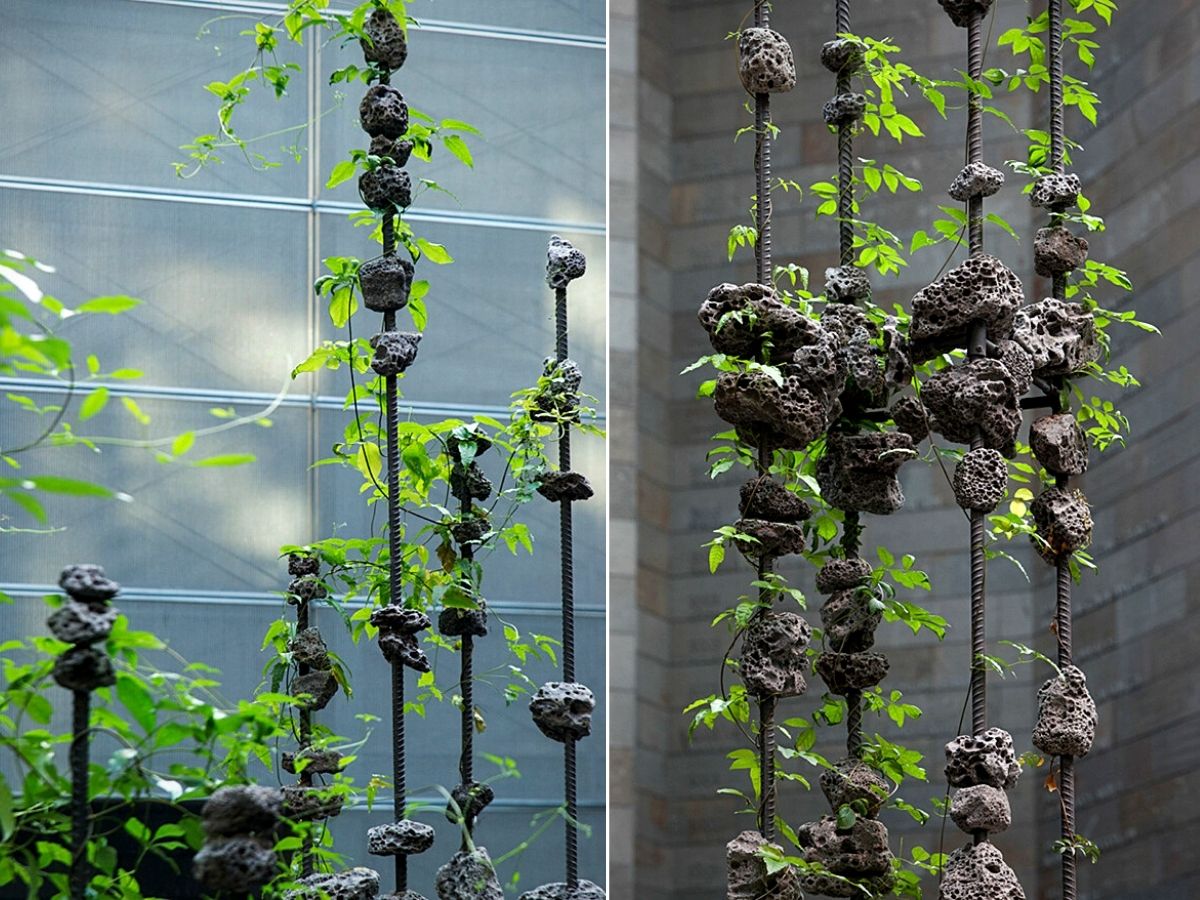
Dianella caerulea (Blue Flax Lily)
This native Australian plant features strappy leaves and clusters of small, star-shaped blue flowers. Dianella caerulea is often found in coastal and bushland areas. Its hardiness and adaptability make it a suitable choice for Jamie North's sculptures, adding a touch of natural elegance.
Tillandsia species (Air Plants)
Air plants, belonging to the Tillandsia genus, are epiphytic plants that can grow without soil. Their unique ability to extract nutrients and moisture from the air makes them fascinating additions to North's sculptures. Air plants often have silvery-gray leaves and produce colorful blooms, adding an ethereal quality to the artworks.
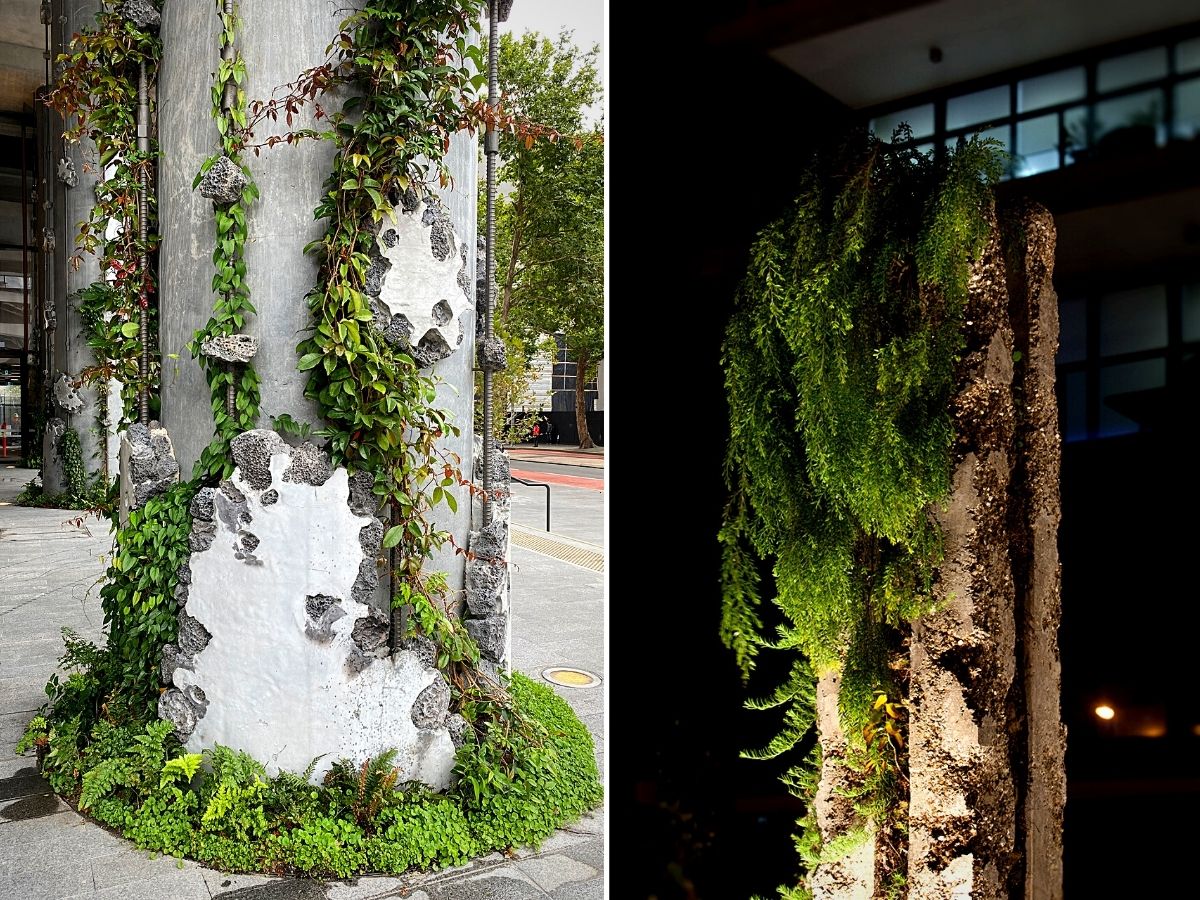
Climbing Vines
North incorporates various climbing vine species into his sculptures, allowing them to explore and interact with the concrete forms. Examples may include species like Hardenbergia violacea (Purple Coral Pea), Kennedia rubicunda (Dusky Coral Pea), or Pandorea species (Wonga Wonga Vine), depending on the specific requirements of the installation site.
Other plants include Hoya australis (Common wax flower) Pandorea pandorana (Wonga Wonga), Kangaroo vines, Plectranthus argentatus (Silver spur flower) Adiantum aethiopicum (Maidenhair fern) Dichondra repens (Kidney weed) Peperomia enervis, and Port Jackson figs, all of which usually slither and wrap around the sculptures, and even sneak out of the cracks and crevices on the concrete dilapidated structures into which they seem to breathe a new life.
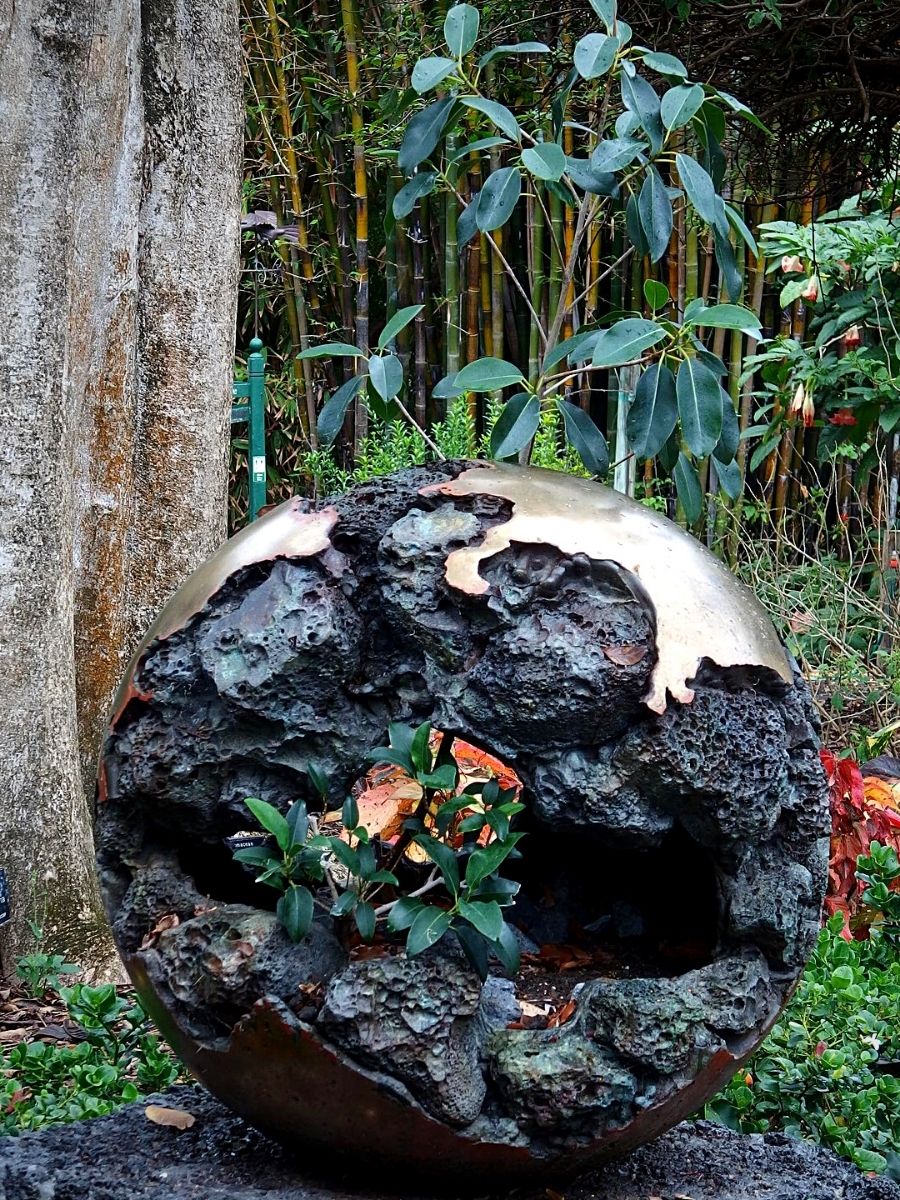
Incorporating Plants Into the Concrete Sculptural Artworks
North's selection of specific plant species to incorporate into his sculptures is a thoughtful process. He takes into consideration various factors, including the local context, ecological considerations, and the visual impact he wishes to achieve.
So, how does he achieve this?
The artist focuses on utilizing indigenous or native plant species in the sculptures. This choice is significant as it not only celebrates the local flora but also promotes ecological sustainability and supports the natural biodiversity of the region. Incorporating into the sculptures plants that are adapted to the local environment ensures their compatibility with the surrounding ecosystem.
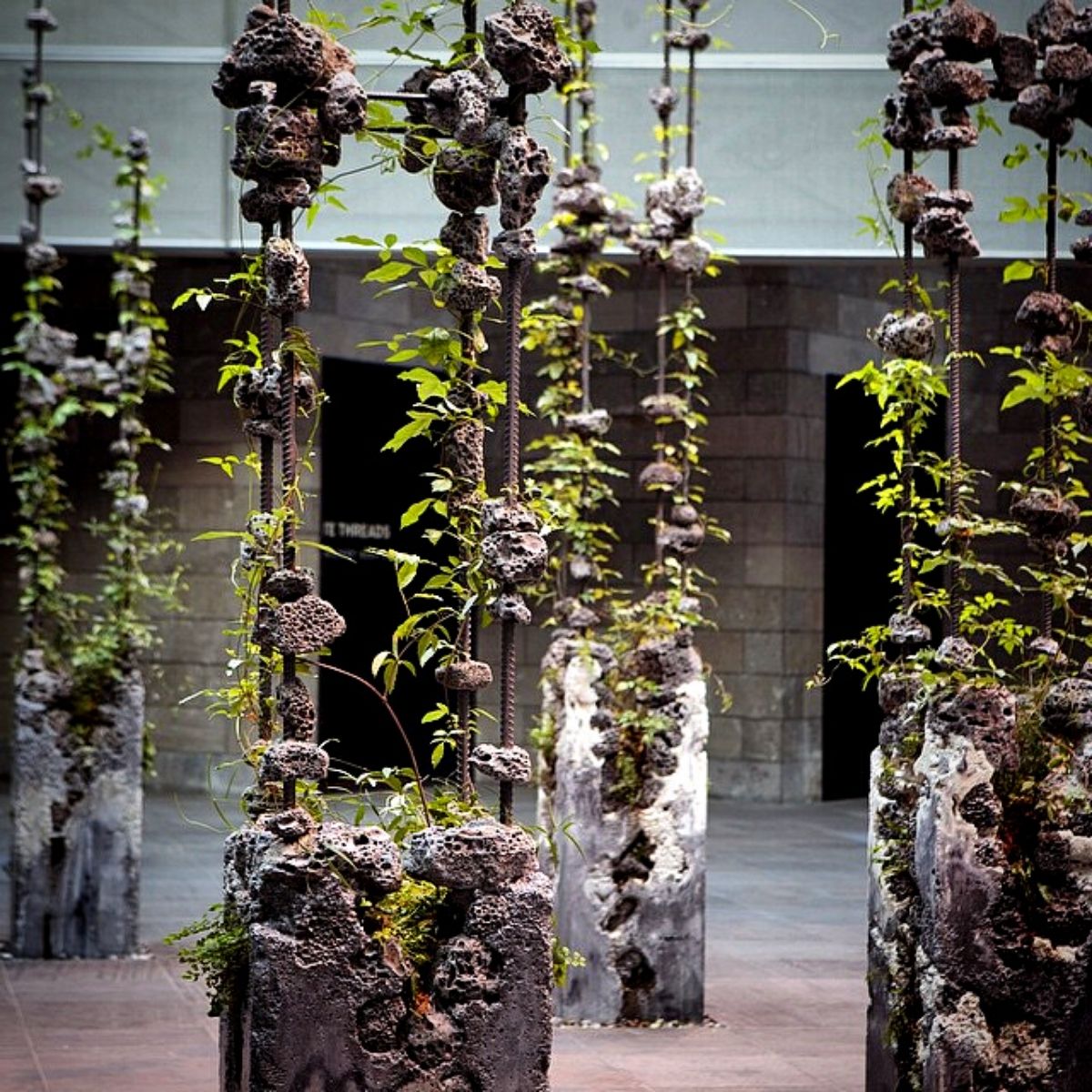
Similarly, when choosing plant species, North considers the specific site where the sculpture will be installed. He takes into account factors such as climate, soil conditions, light exposure, and water availability. In turn, by adapting his plant selection to the site's unique conditions, the result is a long-term viability and health of the plants within the sculpture.
What’s more, the artist carefully studies the growth patterns and characteristics of different plant species. He looks for plants that have the ability to adapt and thrive in challenging environments, such as those with limited soil or water availability. He studies their growth rate, root structure, and the way they interact with their surroundings. This understanding helps him select plants that will integrate well with the concrete structure and create visually appealing compositions.
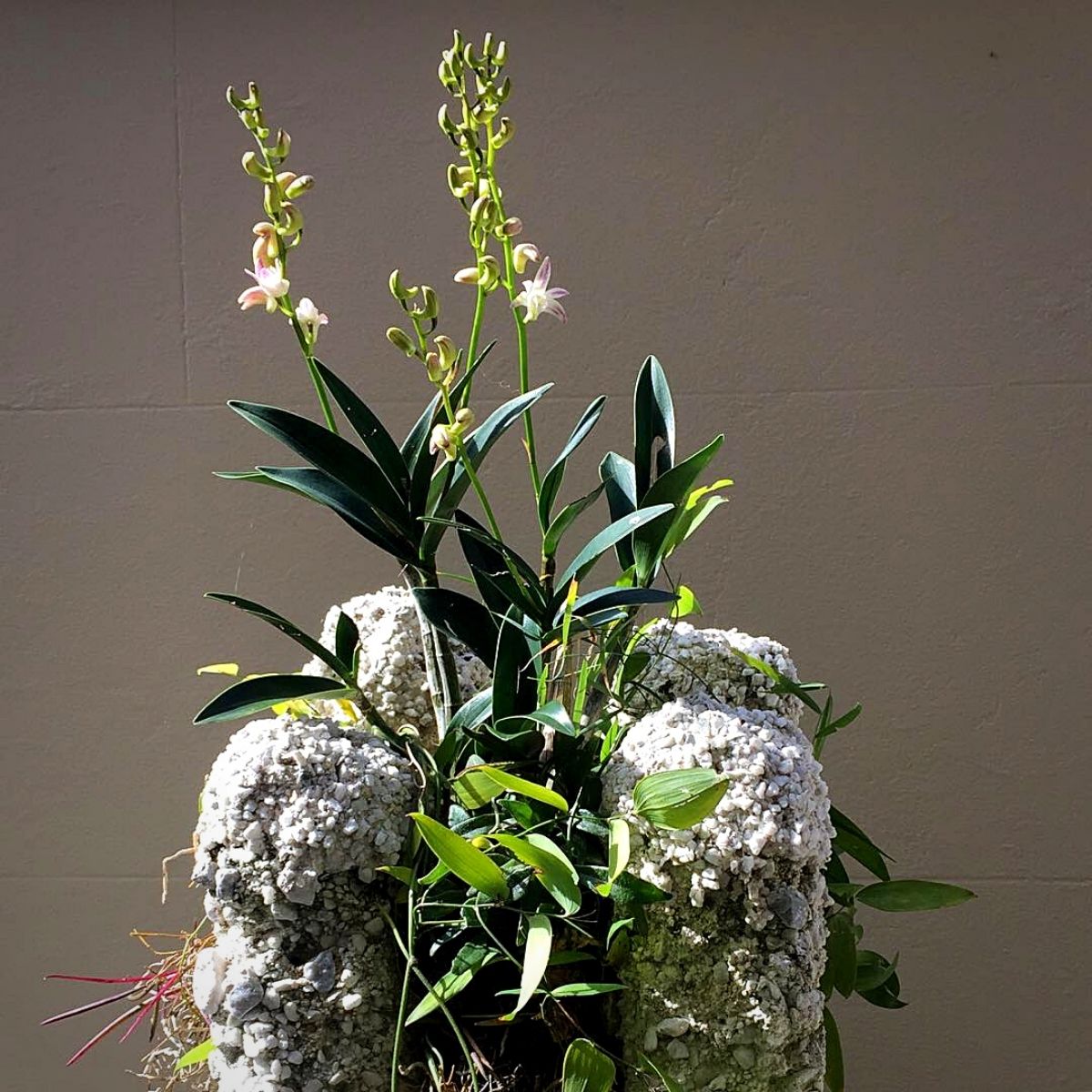
In addition, the visual impact of the plant compositions is also an important aspect of North's selection process. He considers factors such as color, texture, and the overall aesthetic harmony between the plants and the concrete sculpture. This helps in the careful curation of the combination of plants, resulting in visually striking contrasts and harmonies, all of which enhance the overall artistic experience.
In some cases, North collaborates with botanists, horticulturists, or ecologists to gain a deeper understanding of plant species and their ecological roles. These collaborations provide valuable insights into the specific requirements and behaviors of different plants, ensuring their successful integration into the sculptures.
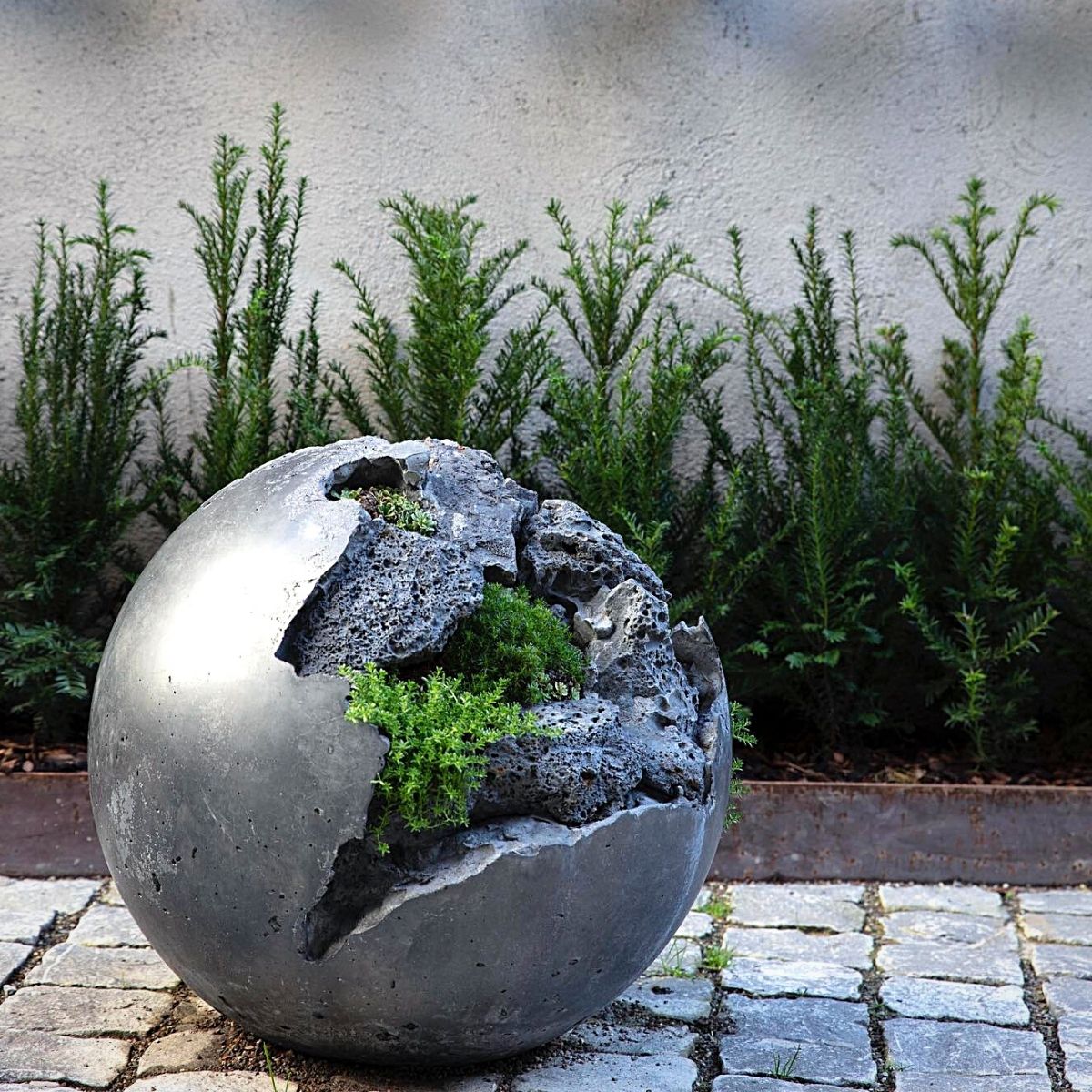
Recognition and the Impact of North’s Works
The Australian artist has exhibited internationally including in solo exhibitions at Sarah Cottier Gallery, Terraforms (2014), Remainder (2016) and Worlds (2019). International group exhibitions in which he has taken part include Concrete (2015), at the Tophane-i-Amire Cultural Centre in Istanbul, and selected as a resident in the NTU Centre for Contemporary Art Singapore Residences Programme in 2017. His other highlights include exhibiting in the 20th Biennale of Sydney and also holding major public collections including Museum of Old and New (MONA), National Gallery of Victoria (NGV).
His sculptures have, also, gained significant attention and critical acclaim as his works seem to prod audiences to reflect on their own relationship with the natural world and the impact of human activities on the environment.
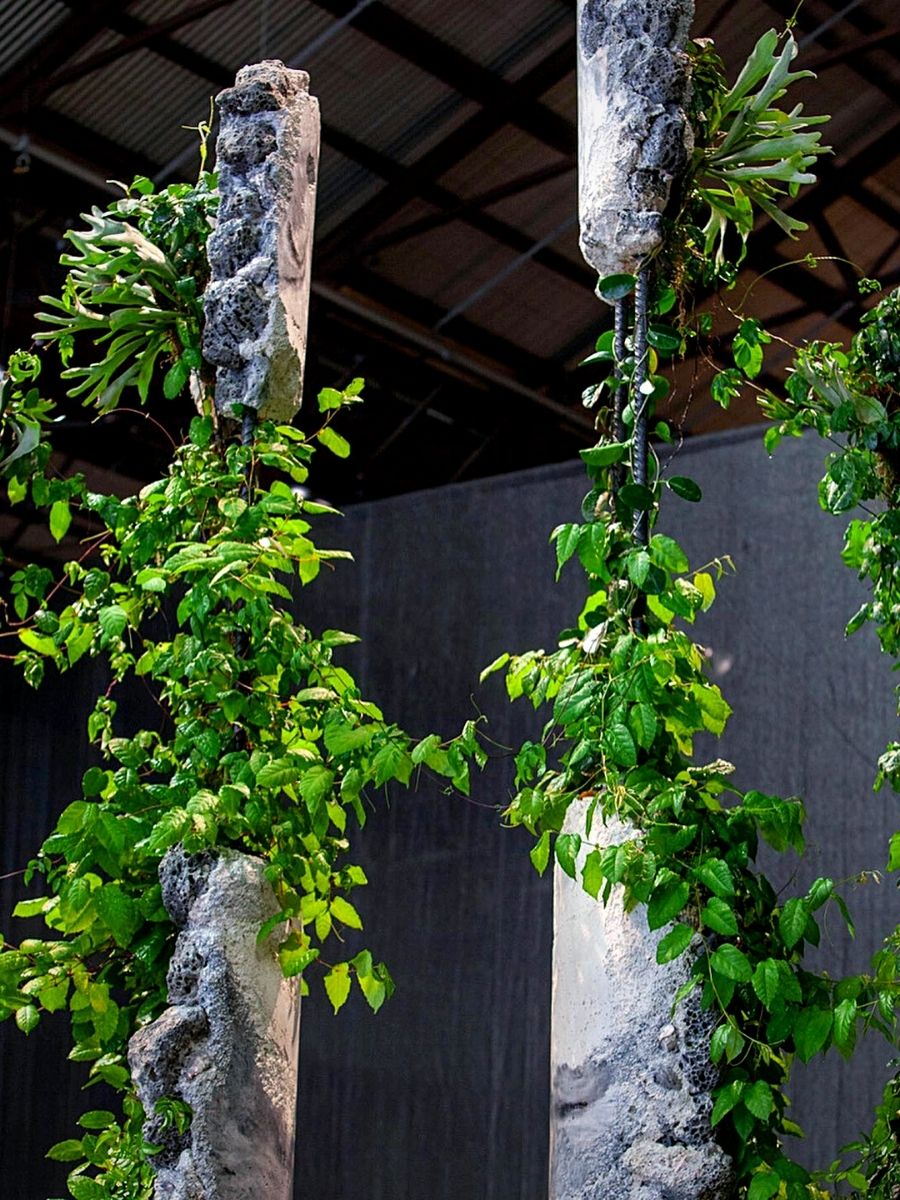
The artistic works, furthermore, are a cue to the regenerative power of nature and the potential for a harmonious simultaneity between the human-made and the natural.
Definitely a unique way to showcase nature’s resilience and its regenerative power!
Photos from Jamie North’s site and Instagram page.

